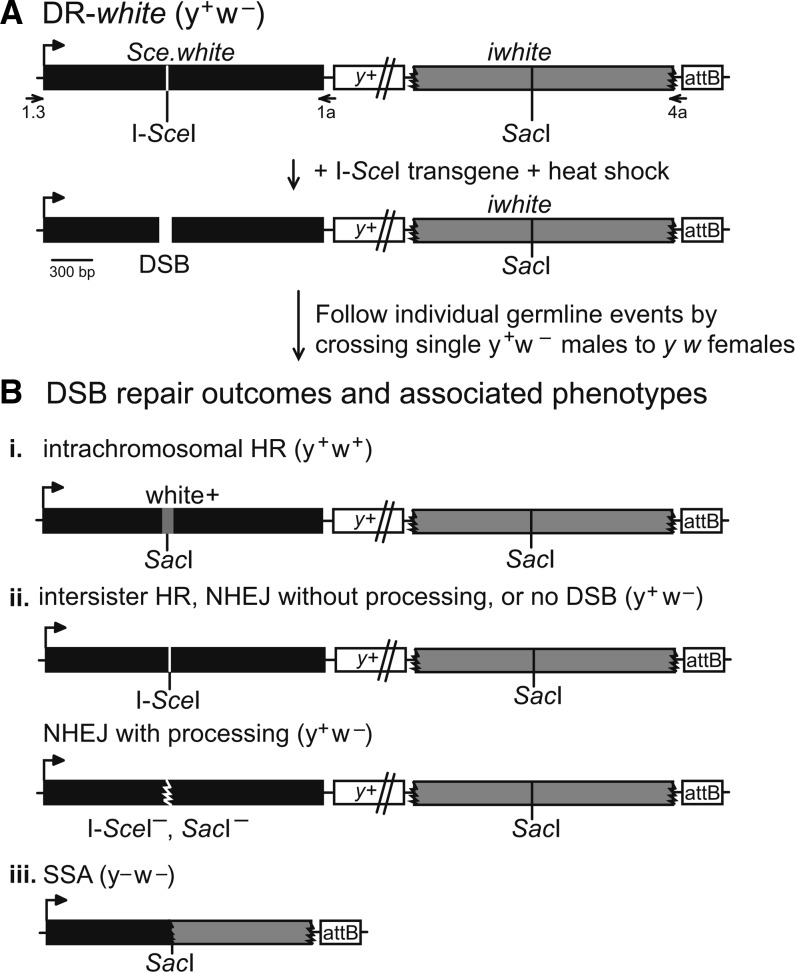Figure 2.
DR-white and DR-white.mu measure repair of an induced DSB. (A) To analyze repair of an inducible chromosomal DSB, an I-SceI recognition sequence is inserted into the wild-type SacI recognition sequence of white cDNA, resulting in a defective white sequence (Sce.white; black). The second white sequence is defective because of 5′ and 3′ truncations (iwhite; gray). Integration of DR-white is targeted using the attB sequence and followed with the yellow (y+) transgene (not to scale). Embryos and larvae containing both DR-white and a heat-shock–inducible I-SceI transgene are heat-shocked and crossed to y w females to score individual germline repair events. (B) After I-SceI cleavage, three phenotypes associated with DSB repair outcomes occur. (i) Noncrossover intrachromosomal HR occurs with gene conversion of the I-SceI sequence to wild-type SacI sequence (conversion shown in gray), resulting in white+ recombinants. (ii) Retention of the y+ w− parental phenotype occurs after intersister HR, NHEJ without processing, no DSB, or NHEJ with processing. The latter can be identified by amplification of Sce.white with primers DR-white1 and DR-white1a (1, 1a), followed by in vitro cleavage of the PCR product with both I-SceI and SacI. Junctions of NHEJ with processing events are analyzed by sequencing Sce.white PCR products. (iii) SSA results from extensive resection and annealing of direct repeats and loss of intervening y+ sequence. These events are confirmed by 2.0-kb amplification across DR-white with primers DR-white1.3 and DR-white4a (1.3, 4a). Phenotypes of the DSB repair events and status of DSB break site sequence are given for all outcomes.

